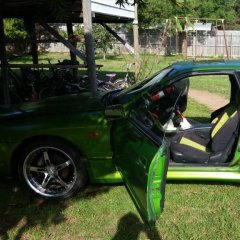ECU CAPABILITY
Announcements
-
Similar Content
-
Latest Posts
-
I might just check it out.. A Q among all those skylines.. lol
-
By Dose Pipe Sutututu · Posted
Time will tell, they're doing all the admin stuff at the moment. I've submitted all the required details, photos, etc. I was under the impression that DC coupling is the best approach, i.e.: Solar Array -> Battery Invertor -> Battery Where as AC Coupling is simpler, however less efficient, i.e.: Solar Array -> Solar Invertor -> Battery Invertor -> Battery -
The price is really great for that kind of capacity. I thought similar setups cost way more. How's your efficiency been with the DC-coupling? I've heard sometimes there can be a bit of a performance loss.
-
By Dose Pipe Sutututu · Posted
Long time no random post about shit. So I went down this deep deep rabbit hole of battery storage for the home, ended up locking in a 41.9kWh Fox ESS EQ4800 with 9 units stacked. Battery uses Lithium Iron Phosphate, similar to what you find in those deep cycle boat/caravan batteries. And yes, why did I go with a cheapie brand and not like Synergy? simply because I don't plan to stay at this house for more than another 3~5 years. The entire install, DC coupling (removal of existing invertor, connecting the current 6.6kW array direct to the battery invertor), new 8kW invertor is $6K all up (after all the rebates etc.). Going with this lot: https://www.aussiesolarbatteries.com.au/ It did seem a bit too good to be true, however seems like the Whirlpool community has vetted it and when it comes to this kind of stuff, they seem to be all over it: https://forums.whirlpool.net.au/thread/9pxj8482?p=38 I've requested for the battery to be installed outside, next to my meter board and not inside - rather have it combust and ignite outside lol. -
In Vic it would be a defect regardless of whether or not you cut a hole in the sheetmetal for the return pipe. The rules in Vic are shitful, and are generally interpreted as you can "make 2 mods to the intake system". Putting an FFP and an FMI onto it will almost certainly be seen as some huge number of intake mods. You really need to speak to an engineer before doing this stuff in VIC.
-



Recommended Posts
Create an account or sign in to comment
You need to be a member in order to leave a comment
Create an account
Sign up for a new account in our community. It's easy!
Register a new accountSign in
Already have an account? Sign in here.
Sign In Now